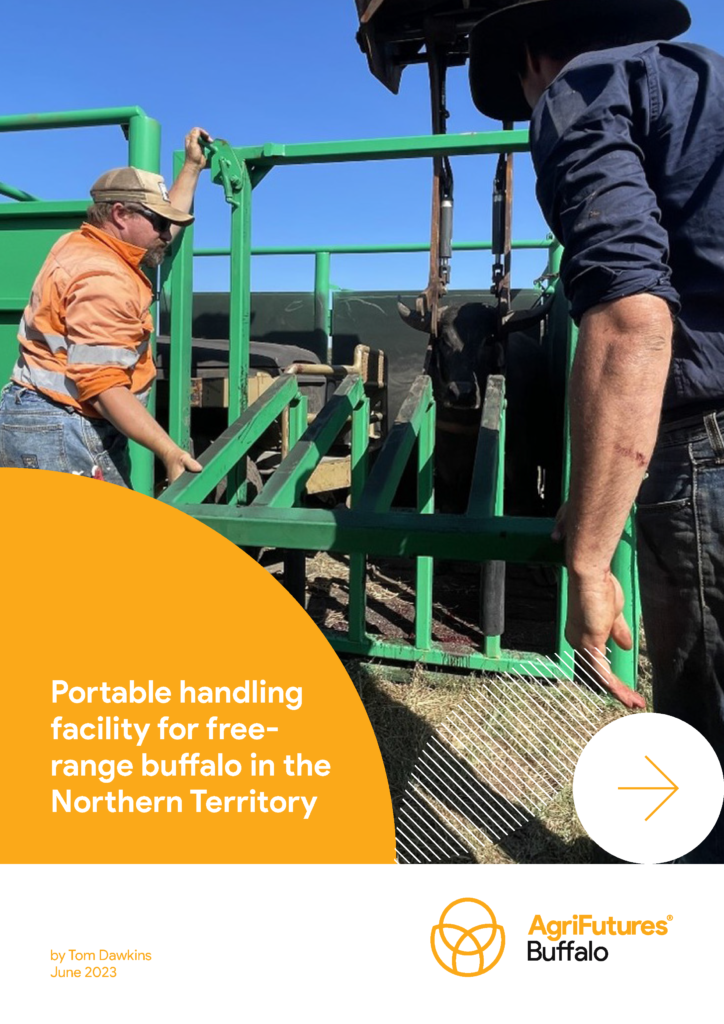This project designed and constructed a portable processing facility prototype suitable for use in temporary remote yards to hold and handle newly harvested, free-range buffalo for safe ear-tagging and horn tipping. By engineering a solution that promotes animal welfare, user safety, biosecurity and commercial efficiency, the portable handler adds value to the Northern Territory (NT) buffalo industry and benefits the northern Australian livestock supply chain.
The availability of a portable buffalo handling prototype suitable for use in remote locations and able to process newly harvested, free-range buffalo is a breakthrough for the buffalo industry in the NT. The modern design, which enables buffalo to be safely ear-tagged and dehorned, promotes good animal welfare, biosecurity, workplace safety and supply chain efficiency – all of which add to the resilience of the industry.
Buffalo industry stakeholders were proactive in the design and construction of the portable processing facility to ensure functionality in the field. The facility is intended to increase productivity and reduce stress on free-range buffalo by simplifying the process of restraining, tagging and dehorning buffalo of various weights. During the design and construction process, special attention was paid to balancing the need for the steel fabrication to be strong and durable, but also portable for when loading and handling buffalo.
The project has confirmed the commercial viability of fit-for-purpose portable processing technology that is strong, durable and efficient, has utility, and promotes good animal husbandry. Construction of additional handling facilities that are the same or similar is now enabled by the trial work conducted, and will be encouraged once the prototype handler designed in this project is utilised in commercial settings beyond trials.





